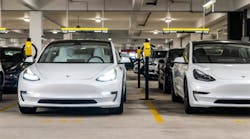The Illuminating Engineering Society (IES) last week introduced a new approach to measuring and characterizing color rendition in solid-state lighting systems, a move to resolve one of the more persistent puzzles involved in specifying and selling solid-state lighting technology in settings where color fidelity is paramount.
The new technical memorandum, TM-30-15, takes aim at the weaknesses of the International Commission on Illumination’s (CIE) Color Rendering Index (CRI) and proposes alternatives. What the IES task force came up with is a two-part measurement, based on 99 color evaluation samples.
"Built on the progress made by many other researchers over the past two decades, and synthesizing many of their concepts, the new system employs two separate high-level measures. Both measures employ a set of color evaluation samples that, for the first time, represent real objects uniformly spanning color space and giving equal importance to all visible wavelengths; in combination with modern color calculation procedures, the samples yield more representative and more accurate results," the DOE said in a release last week.
The first measure, Rf, is analogous to CRI in that it's a metric of color fidelity but improves on CRI with better test samples that are harder to "game." The second measure, Rg, is an improved color gamut measure for assessing variation in the chroma of illuminated objects.
The weaknesses of CRI have been well known for some time, but developing an alternative was no simple task. The IES task force convened to look at color rendering began its work in 2013, drawing participation from academia, government, manufacturing, and the specification community, chaired by Pacific Northwest National Laboratory’s Michael Royer, a member of DOE’s solid-state lighting team.
In a presentation developed for this year's Lightfair, Royer gave some insights on what changes in color rendering methods will mean for designers and specifiers and it all begins with education - understanding what the new TM-30 tells you and what its limitations are.
Recognizing that driving adoption of the new color rendering methods will be a huge task, the DOE has scheduled two 90-minute webinars in September on TM-30-15. The first, Sept. 15, will cover the basics and the path to adoption. The second, Sept. 22, will focus on the math and color science. To register or get more info, visit the DOE website.










